Elliptical flaw
SPECIMEN
The inspected specimen is a plate of 1.27 mm thickness, in aluminium, conductivity of 18 MS.m-1 and relative permeability of 1.
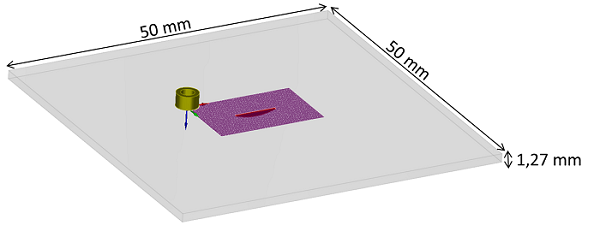
Plate modeled in CIVA
PROBE
The probe is made out of a cylindrical coil at double function which geometrical properties are gathered on the figure below that shows the panel in CIVA allowing the definition of those properties. The acquisition is done at 100 kHz, with 100 mA in injection and reception in absolute mode.
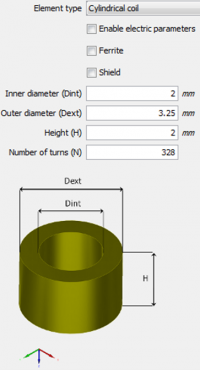
Geometrical properties of the probe
Flaw
The specimen has a non-through elliptical defect emerging on surface, as drawn on figure below.
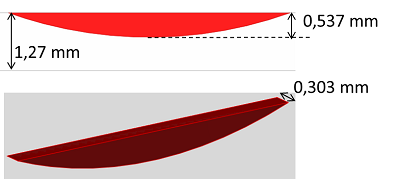
High and thickness of the elliptical defect present in the flat piece to inspect
EXPERIMENT/SIMULATION COMPARISONS
The experimental measurements have been realized with an impedancemeter, it has also not been necessary to calibrate the results before the comparison.
The figure below represents the C-scans obtained with the experiment and CIVA. They look similar.
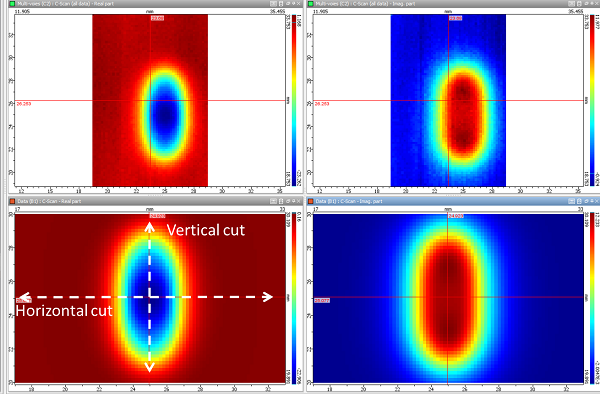
Experimental C-scans (top) and obtained with CIVA (bottom) of real part (left) and imaginary part (right)
Amplitudes, phases, real and imaginary parts as a function of the scanning are compared on figures below. A good agreement is observed between experiments and simulations.
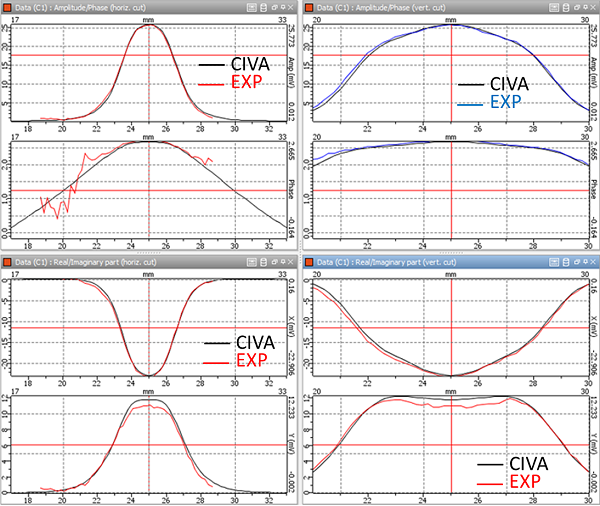
Amplitude/phase curves comparisons (top), real/imaginary (bottom), horizontal (left) and vertical (right) cuts.
Here below Lissajous curves show a good agreemnt between simulations and experiment,
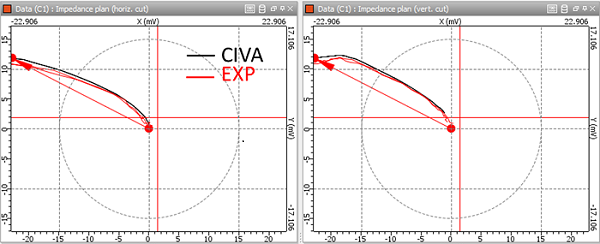
Lissajous curves in impedance plane, horizontal cut (left) and vertical cut (right)
Finally, the table below gathers ampltudes and phases values and confirms the very low gap between experiment and simulation, less than 1 dB.

Maximal amplitudes values and corresponding phases, and discrepancies between CIVA and experiment (references: experimental values).
Go to TILTED COIL
Go back to BENCHMARK COFREND SEPARATE FUNCTION
Go back to FLAT SPECIMEN
